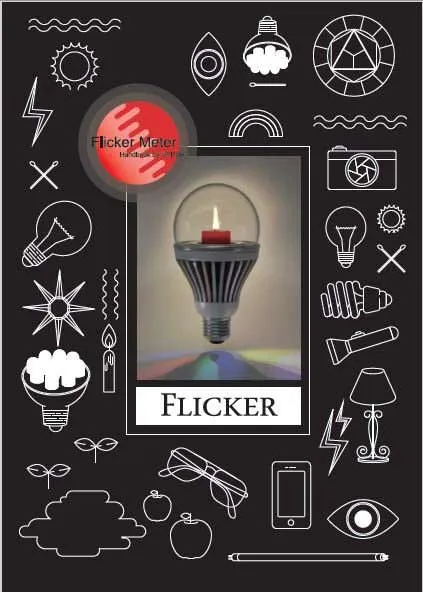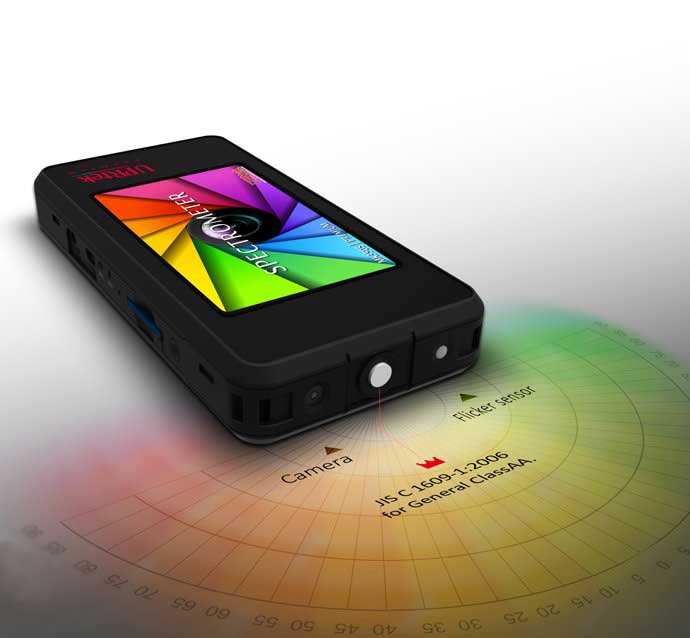¿QUÉ SIGNIFICA LA ABREVIATURA QUE SE UTILIZA EN EL ESPECTRÓMETRO UPRTEK?
(Esta es una página solo en inglés)
Función del producto
Las abreviaturas, los nombres completos, las unidades y las descripciones de los medidores de medición de luz UPRtek son los siguientes:

UPRtek Spectrometer Parameter Abbreviation
| No. | Abbreviation | Full Name | Unit | Descriptions | Application |
|---|---|---|---|---|---|
| 77 | SSI | Spectral Similarity Index | – | New index for the spectral evaluation of luminaires developed by the Academy of Motion Picture Arts and Sciencesin collaboration with cinematographers, film lighting experts, and lighting manufacturers. Use any light source as the standard light source (or other preset standard light source such as CIE D55) to compare it with the test light source. The higher the index, the higher the suitability. | In CV600 only |
| 76 | TLMF | Television Lighting Matching Factor | – | It compares the light source (A source, D65, D55, D50 as standard) with another source (such as LED light to fluorescent light). The higher the index, the higher the similarity | In CV600 only |
| 75 | LBi | LB index | – | It is the Mired difference between the measured light and the target light. For example, the measured light of 4000K and the target light of 5000K are 50MK-1. The color temperature will be increased if added with blue(B), while it will be decreased if added with amber (A). | In CV600 only |
| 74 | CCi | CC index | – | CCi is the distance between the blackbody radiations with or without green. 1 CCi equals 2.5 CC filter number. | In CV600 only |
| 73 | LBf | LB filter number | – | LB stands for Light Balancing. The filter number varies with different suppliers. It is used to adjust the difference of color temperature between the measured light and the target color. Generally, the manufacturer takes CTO (Color Temperature Orange) and CTB (Color Temperature Blue) as units, which represents the corrected color, orange or blue. | In CV600 only |
| 72 | CCf | CC filter number | – | CC stands for Color Compensation or Color Correction. The filter number varies with different suppliers. It is used to compensate the distance from the blackbody radiation, just like shortening Duv | In CV600 only |
| 71 | Mired | Mired | – | Mired = 1000000/CCT, is the deviation unit of the color temperature of the filter. | In CV600 only |
| 70 | %RH | Relative Humidity | – | Relative humidity, expressed as a percentage, indicates a present state of absolute humidity relative to a maximum humidity given the same temperature | In PG200N only |
| 69 | °C | Temperature | – | Temperature is a physical quantity that expresses hot and cold. | In PG200N only |
| 68 | PSS | Phytochrome Photostationary State | – | It is the ratio of the concentration of phytochrome A red to the total concentration of phytochrome. | In PG200N only |
| 67 | Phytochrome A far red | Phytochrome - Proteinfar-red | – | Phytochrome A far red is a pigment in plants; it is a protein. When it absorbs far-red light, it will drive the pigment back into the form of absorbing red light, Pr. Plants mainly receive external light signals through phytochrome to adjust their own growths, developments and flowerings | In PG200N only |
| 66 | Phytochrome A red | Phytochrome - Protein red | – | Phytochrome A red is a pigment in plants; it is a protein. When it absorbs red light, it will change into a pigment that absorbs far-red light, Pfr. Plants mainly receive external light signals through phytochrome to adjust their own growths, developments and flowerings. | In PG200N only |
| 65 | Beta-carotene | β-carotene | – | β-carotene is one of the carotenoids; it is widely found in the leaves, flowers and roots of plants. | In PG200N only |
| 64 | Chlorophyll B | – | – | Chlorophyll is a photosynthetic pigment that exists in plants, algae and cyanobacteria. Chlorophyll B can absorb light energy and sends it to Chlorophyll A for photoreaction; it is also called the accessory pigment. | In PG200N only |
| 63 | Chlorophyll A | – | – | Chlorophyll is a photosynthetic pigment that exists in plants, algae and cyanobacteria. Chlorophyll A is the pigment that mainly undergoes photoreaction, and that¡¦s why it is also called the primary pigment. | In PG200N only |
| 62 | PFD-R: FR ratio | PPFD ratio between the red and far-red fields | – | PPFD ratios within the 600~700nm range and 700~800nm range. | In PG200N only |
| 61 | PFD-B: G ratio | PPFD ratio between the blue and green fields | – | PPFD ratios within the 400~500nm range and 500~600nm range. | In PG200N only |
| 60 | COI | Cyanosis observation Index | – | An open-ended numerical scale ranking the suitability of a light source for the purpose of visual detection of the presence or onset of cyanosis. The lower the value of the index, the better the light source is deemed to be for that purpose | In MK350SP only |
| 59 | MDER | Melanopic Daylight Efficacy Ratio | – | CIE S 026/E:2018 ≙ mv, mel, D65 (DIN SPEC 5031-100, conversion factor relative to the type of D65 light, to calculate the melanopic daylight equivalent illuminance) | In MK350SP only |
| 58 | Cyanopic Lux | Illuminance for S Cone Cell | – | S cone cells mainly percept blue color; the sensitivity range is 400 nm ~ 500 nm; the peak wavelength is about 420 nm ~ 440 nm; Impact on organisms is analyzed by quantifying the ambient light source through photoreceptor cells. | In MK350SP only |
| 57 | Erythropic Lux | Illuminance for L Cone Cell | – | L cone cells mainly percept red color; the sensitivity range is 500 nm ~ 700 nm; the peak wavelength is about 564 nm ~ 580 nm; Impact on organisms is analyzed by quantifying the ambient light source through photoreceptor cells | In MK350SP only |
| 56 | Chloropic Lux | Illuminance for M Cone Cell | – | M cone cells mainly percept green color; the sensitivity range is 450 nm ~ 630 nm; the peak wavelength is about 534 nm ~ 545 nm; Impact on organisms is analyzed by quantifying the ambient light source through photoreceptor cells. | In MK350SP only |
| 55 | Rhodopic Lux | Illuminance for Rod Cell | – | Impact on organisms is analyzed by quantifying the ambient light source through photoreceptor cells | In MK350SP only |
| 54 | Melanopic Ratio | Percentage of Illuminance for Melatonin | % | Relationship between illuminance of melatonin and illuminance of photopic vision | In MK350SP only |
| 53 | Mel Daylight Lux | Daylight Illuminance for Melatonin | – | The indoor lighting environment which is "most suitable for sunlight" is calculated by simulating CIE D65 daylight. | In MK350SP only |
| 52 | Melanopic Lux | Illuminance for Melatonin | – | Quantitative light measurement of the stimulation level for melanoprotein in optical response to light source | In MK350SP only |
| 51 | Mel Irradiance | Irradiance for Melatonin | uW/cm2 | Quantitative light measurement of the stimulation level for melanoprotein in optical response to light source. | In MK350SP only |
| 50 | TRANSMIT | Transmittance | % | The transmittance is defined as (the radiant flux transmitted/the radiant flux received)x100 %, based on which the wavelength response can be obtained. | In MK350SP only |
| 49 | SDCM | Standard Deviation Color Matching | – | SDCM has the same meaning with that of Macadam Ellipse. The color within Macadam Ellipse (SDCM=1) drawn on the coordinate can¡¦t be identified by human eyes. | In MK350SP only |
| 48 | BIN | – | – | To classify the chromaticity of LED, ENERGY STAR combines with ANSI C78.377 standard to classify various classes and make uniform BIN types. So the user may distinguish the chromaticity of LED products easily. | In MK350SP only |
| 47 | GAI | Gamut Area Index | – | The Gamut Area Index is the ratio between the area of the eight standard colors (R1~R8) on CIE1976 coordinate measured by CRI and the area measured with the standard illuminant E(x,y = 0.333, 0.333). The higher the value is, the more saturated and bright the color is. | In MK350SP only |
| 46 | BL% | Ratio of blue light with respect to blue light damage | % | Ratio index of radiant energy in blue light band (401 nm - 500 nm). | Not in CV600 & PG200N |
| 45 | RG | BLH Risk Group | – | Define the four RG grades of blue light damage risk according to the maximum exposure time (the maximum safe time for retina under direct exposure to light source) measured by blue light radiance. | Not in CV600 & PG200N |
| 44 | Kbv | Blue light hazard efficacy of luminous radiation | W/lm | Based on Kbv = EB/E (blue light hazard radiance, EB, and total luminance of the light source) to analyze individual light source spectrum radiation and level of blue light injury on human eyes. | Not in CV600 & PG200N |
| 43 | EB | Blue light weighted irradiance | W/m2 | The IEC62471 specification has blue light damage spectral function B (λ) built in. Determine major scope of blue light damage to human eyes with this function and factor in the light source spectral irradiance to obtain blue light radiation damage irradiance. | Not in CV600 & PG200N |
| 42 | Flicker Risk | – | – | The flicker risk model provides users with risk value of target light source according to IEEE PAR 1789-2015 flicker safety specification standards. | In MK350SP & MK350NP only |
| 41 | Min/Max (DB) | – | dB | Waveform minimum / maximum. | In MK350SP & MK350NP only |
| 40 | Min/Max (%) | – | % | Waveform minimum / maximum. | In MK350SP & MK350NP only |
| 39 | Max | – | V | Waveform maximum. | In MK350SP & MK350NP only |
| 38 | Min | – | V | Waveform minimum. | In MK350SP & MK350NP only |
| 37 | Avg | – | V | Waveform average. | In MK350SP & MK350NP only |
| 36 | RMS(DB) | Flicker square root | dB | Flicker RMS is the square root of the average of a set of squares of statistical data. | In MK350SP & MK350NP only |
| 35 | RMS(%) | Flicker square root | % | Flicker RMS is the square root of the average of a set of squares of statistical data. | In MK350SP & MK350NP only |
| 34 | SVM | Stroboscopic Effect visibility Measure | – | SVM is an index used to quantify the flicker effect. Higher value represents obvious flicker effect. | In MK350SP & MK350NP only |
| 33 | S/P (SP-Ratio) | Scotopic vision / photopic vision ratio | – | The sensitivity of human eyes varies with the light of different wavelength. It can get the data such as illuminance based on the brightness function. However, the brightness function is different for human eyes under high brightness and low brightness. Therefore, it defines the ratio of photopic vision under high brightness and scotopic vision under low brightness, which is called S/P ratio. | In MK350SP & MK350NP only |
| 32 | CQS | Color Quality Scale | – | CQS is a new light source quality parameter developed by NIST for the new solid-state lighting markets. Addressing CRI, assess light source with the 15 new colors: with a scale of 0-100, scores 100 suggest the best quality and zero the worst. | In MK350SP & MK350NP only |
| 31 | Frequency | Flicker Frequency | Hz | It is the flicker rate of the measured light, or the frequency shown per second. | Not in MK350D & PG200N |
| 30 | Fpercent (Pct Flicker) | Flicker percent | % | Flicker percent=(Maximum value-minimum value)/ ( Maximum value + minimum value). Higher value represents obvious flicker. | Not in MK350D & PG200N |
| 29 | Flicker Idx | Flicker index | – | Flicker index= Area above the mean value /area below the mean value. Higher value represents obvious flicker. | Not in MK350D & PG200N |
| 28 | Rf / Rg | TM30 Rf / TM30 Rg | – | It is a rating method proposed by IES for the performance of light source. Different from 8 standard colors, it defines 99 standard colors to present the performance of various wavelengths. Rf represents the similarity between the target light source and the reference light source under the standard colors. The value 100 represents it is identical, while the value 0 represents great difference. Rg represents the saturation difference between the target light source and the reference light source under the standard colors. The value 100 represents the saturation is the same, while the value larger than 100 represents saturation is higher, and the value smaller than 100 represents saturation is lower. Moreover, it could identify the difference more obviously through the color vector diagram and the color tolerance diagram. | Not in MK350D & PG200N |
| 27 | TLCI | Television Lighting Consistency Index | – | The parameter is defined by referring to European Broadcasting Union (EBU), which is used to evaluate the light source under for television lighting. | Not in MK350D & PG200N |
| 26 | PFD-FR | PFD in FR field | μmol/(m2*s) | PFD in range of 700~780nm (PG200N - 700~800nm) | In MK350SP & PG200N only |
| 25 | PFD-UV | PFD in UV field | μmol/(m2*s) | PFD in range of 380~400nm (PG200N - 350~400nm) | In MK350SP & PG200N only |
| 24 | PFD | Photosynthetic Photon Flux Density | μmol/(m2*s) | Number of photons in range of 380~780nm subjected by unit area in unit time. (PG200N - 350~800nm) | In MK350SP & PG200N only |
| 23 | PFD-B | PFD in blue field | μmol/(m2*s) | PFD in range of 400~500nm. | In MK350SP & PG200N only |
| 22 | PFD-G | PFD in green field | μmol/(m2*s) | PFD in range of 500~600nm. | In MK350SP & PG200N only |
| 21 | PFD-R | PFD in red field | μmol/(m2*s) | PFD in range of 600~700nm. | In MK350SP & PG200N only |
| 20 | PPFD | Photosynthetic Photon Flux Density | μmol/(m2*s) | It is the Photosynthetic Photon Flux Density defined in 400~700nm. | In MK350SP & PG200N only |
| 19 | Purity | Color purity | % | It is the percent of the dominant wavelength in the standard illuminant. The closer the color purity is to 100%, the closer it is to the dominant wavelength. | Not in MK350D and CV600 |
| 18 | Δv’ (Delta v’) | CIE1976 color coordinate difference | – | It is the v’ difference between CIE1976 coordinate and the Planck’s blackbody radiation with the same color temperature. | Not in MK350D and CV600 |
| 17 | Δu’ (Delta u’) | CIE1976 color coordinate difference | – | It is the u’ difference between CIE1976 coordinate and the Planck’s blackbody radiation with the same color temperature. | Not in MK350D and CV600 |
| 16 | Δy (Delta y) | CIE1931 color coordinate difference | – | It is the u’ difference between CIE1976 coordinate and the Planck’s blackbody radiation with the same color temperature. | Not in MK350D and CV600 |
| 15 | Δx (Delta x) | CIE1931 color coordinate difference | – | It is the x difference between CIE1931 coordinate and the Planck's blackbody radiation with the same color temperature. | Not in MK350D and CV600 |
| 14 | Λd (Lambda d) | Dominate wavelength | nm | The dominant wavelength is used to express the color of the measured light. It could be hybrided by the spectrum color of the wavelength and the standard illuminant E(x,y = 0.333, 0.333). | Not in MK350D and CV600 |
| 13 | IRR | Irradiance | W/m2 | It is the irradiance within the range of the wavelength specified in the specification. | Not in MK350D |
| 12 | Duv | CIE1960 uv color coordinate difference | – | It is the uv distance between CIE1960 coordinate and the Planck's blackbody radiation with the same color temperature. The value close to 0 indicates the color temperature and color are closer to that of the blackbody radiation. The positive value indicates it is above the blackbody radiation, while the negative value indicates it is below the blackbody radiation. | Not in MK350D |
| 11 | R1、R2、R3…R15 | 15 standard colors of color rendering index. | – | R6: Light blue, R7: Light purple-blue, R8: Light red-purple, R9: Saturated red, R10: Saturated yellow, R11: Saturated yellow, R12: Saturated yellow, R13: White skin color, R14: Leaf green, R15: Yellow skin color | Not in MK350D |
| 10 | R1、R2、R3…R15 | 15 standard colors of color rendering index. | – | R1:Light grey-red, R2: Dark grey-yellow, R3: Saturated yellow-green, R4: Middle yellow-green, R5: Light yellow-green | Not in MK350D |
| 9 | CRI (Ra) | Color Rendering Index | – | As defined by CIE, R1~R8 represent the value of eight standard colors, while CRI(Ra) is the average value of R1~ R8. The value 100 indicates the best quality of light source, while the value 0 indicates the worst quality of light source. | All Models |
| 8 | fc | Footcandle | fc | It is based on the unit lm/ft2. | All Models |
| 7 | u’,v’ | CIE1976 color coordinate | – | Chromaticity chart CIE1976 by CIE Represent light color with plane (2-dimension) coordinates (u’, v’). | All Models |
| 6 | x,y,X,Y,Z | CIE1931 color coordinate | – | Chromaticity chart CIE1931 by Commission International de l’Eclairage (CIE) Represent light color with plane (2-dimension) coordinates (x, y). | All Models |
| 5 | I-Time | Integration time | us | The integration time measured by the spectrometer. | All Models |
| 4 | ΛpV (Lambda pV) | Peak Wavelength Value | mW/m2 | It is the highest power in the measured spectrum. | All Models |
| 3 | Λp (Lambda p) | Peak Wavelength | nm | It is the wavelength with the highest power in the measured spectrum. | All Models |
| 2 | Lux | lluminance | lx | It is the light flux received by each unit area. | All Models |
| 1 | CCT | Color Correction Temperature | K | The color temperature is the color radiated by a black-body radiator under different temperatures. CCI has the color that is the closest to the ideal black-body radiator. | All Models |
MK350S Premium es un espectrómetro de mano con funciones múltiples en sí mismo. No es solo un espectrómetro, sino que también puede ser un medidor PAR cuántico, un detector de luz azul y un MK350N Premium es un analizador de espectro, medidor de LED y medidor de parpadeo para la fabricación de LED. Incorpora tecnología espectral y optimiza el rango de medición LUX. En general, UPRtek Compact MK350D es el espectrómetro de bolsillo del mundo y se lanzó en 2014. Solo pesa 70 gy es fácil de transportar. Las unidades de luz de medición son más de 27, como CCT, LUX, CRI, CV600 - Medidor de luz fotográfica y cinematográfica profesional de uso múltiple. No es solo un medidor de luz, sino también un medidor de color, un medidor de cine y un medidor de exposición, El medidor PAR espectral portátil PG100N está enfocado en lograr las demandas del campo agrícola. Muestra sus propias ventajas de las funciones de medición, como espectro, PPFD y PFD Advanced MK350S el primer espectrómetro de mano que se cruza con las industrias múltiples. Tenía más de 40 unidades de medición de luz que son CCT, LUX, CRI, CIE1976, CIE1931, PPF, CQS, El espectrómetro MK350N es el primer medidor LED portátil que se puede utilizar sin una computadora para evaluar fuentes de luz artificial, como LED, OLED y otras. Además, puede medir MK350N PLUS es el medidor LED para el fabricante de LED. Incluía más de 40 unidades de medición de luz como CCT, CRI, CIE1931 / 1976, LUX, TLCI y otras. Ayudarlo a descubrir nuevas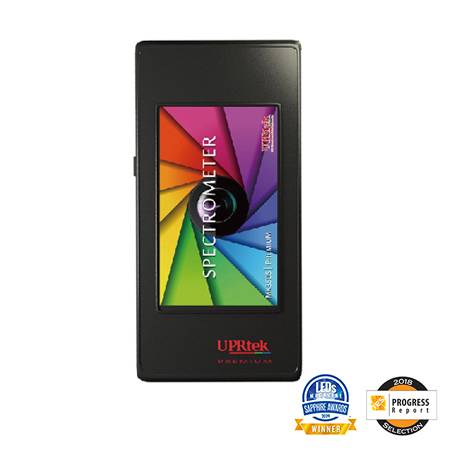
Merchandising visual, soluciones de iluminación LED: espectrómetro de mano
MK350S Premium
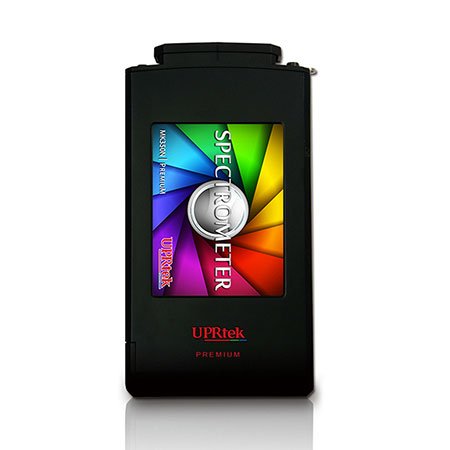
Espectrómetro de mano con medidor de luz espectral independiente
MK350N Premium
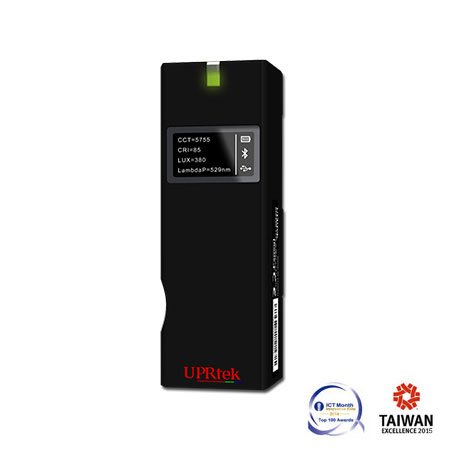
Espectrómetro compacto
MK350D
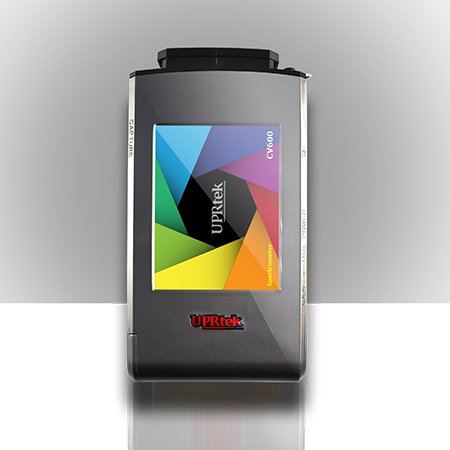
MEDIDOR DE COLOR ESPECTRAL
CV600
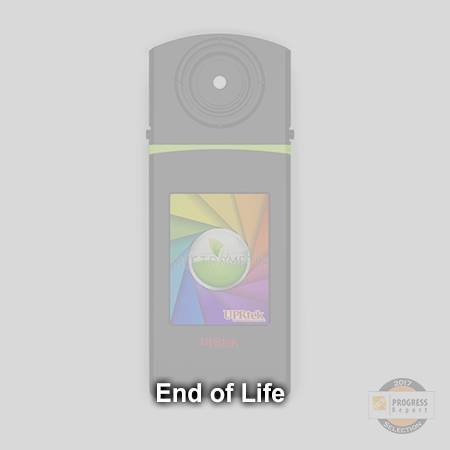
MEDIDOR DE PAR ESPECTRAL
PG100N
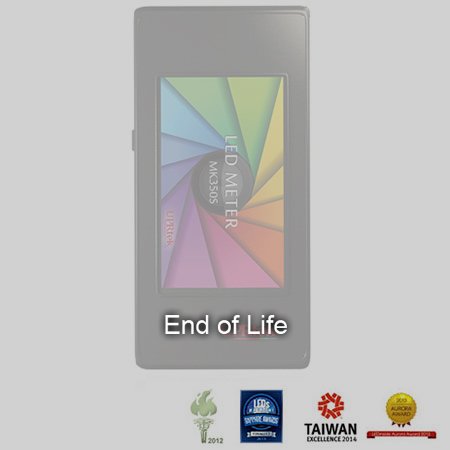
Sistema de medición de iluminación: espectrómetro de mano
MK350S Avanzado
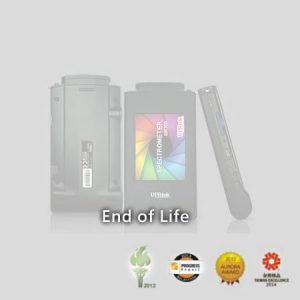
Espectrómetro de mano de prueba y medición LED
MK350N Básico
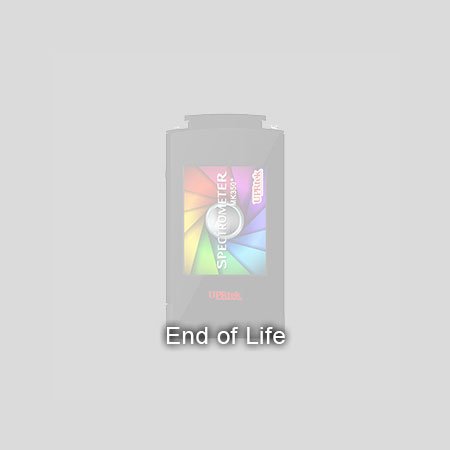
Espectrómetro de mano de prueba y medición LED
MK350N Plus
